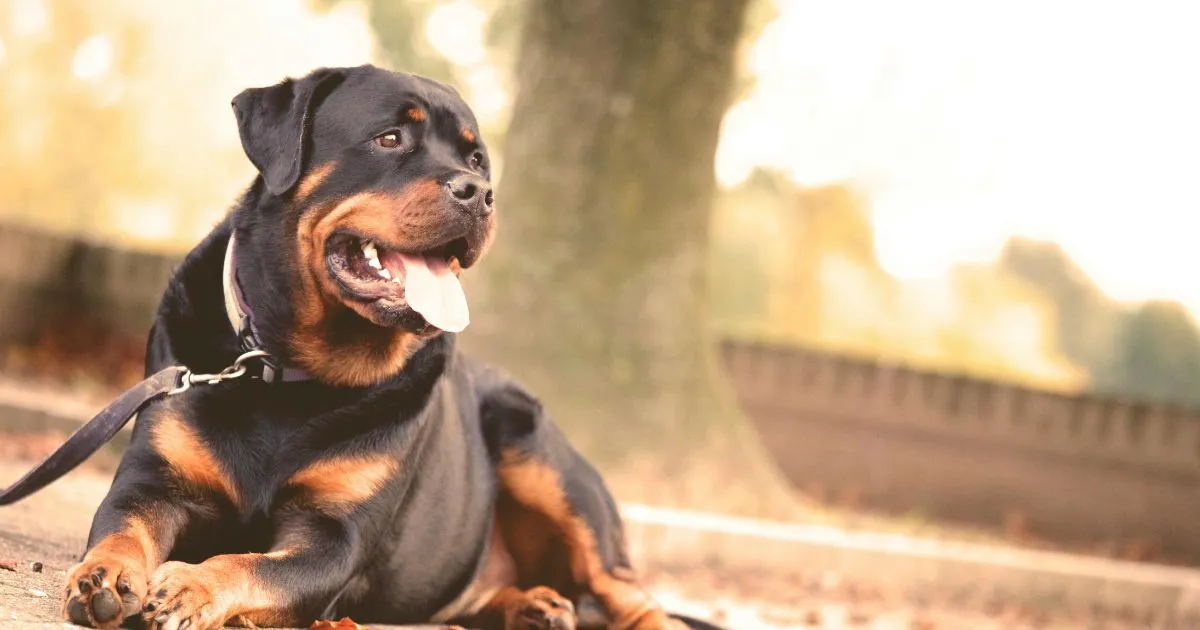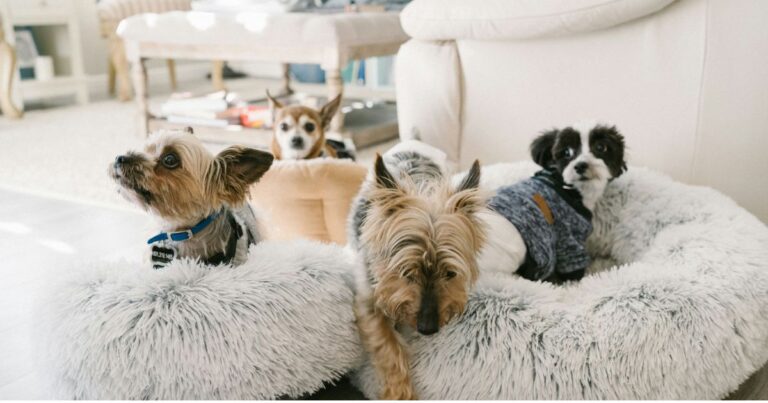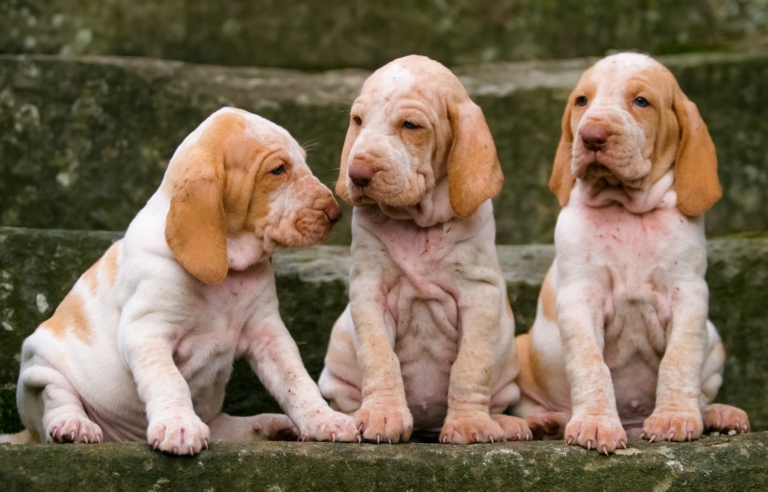Discover the Best Guard Dog Breeds to Keep Your Home Safe
Having a reliable guard dog can greatly improve your home’s security. These dogs are trained to protect and serve, adding safety for you and your family. With the right training, they can alert you to any suspicious activity. This article will explore how guard dogs play a crucial role in home security.
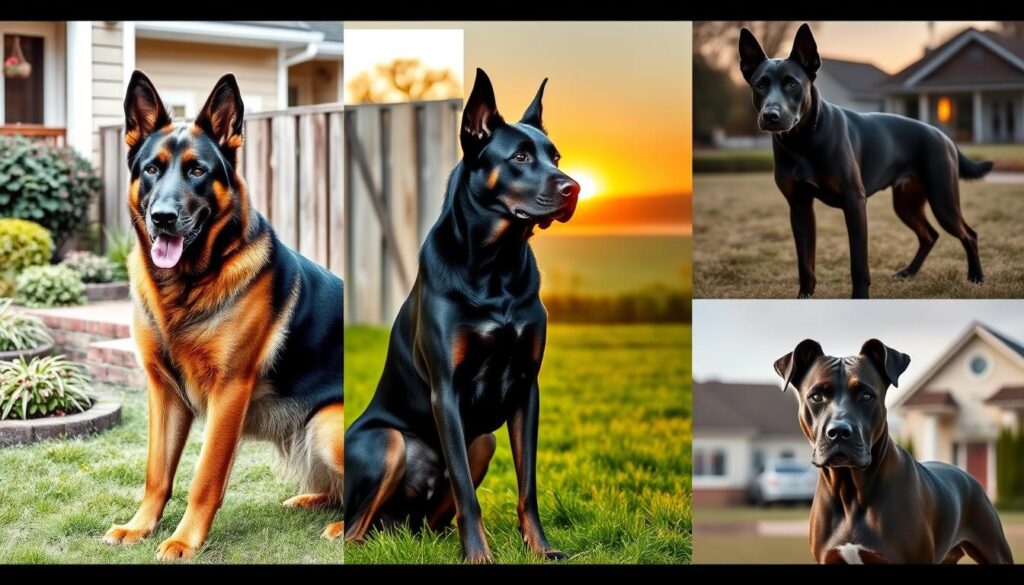
Many breeds, like German Shepherds and Rottweilers, are excellent for home security. With proper training and care, they become key to your family’s safety. Whether you’re looking to boost your security system or start anew, a well-trained guard dog is a smart choice. Knowing the benefits of guard dog training and the best breeds can help you choose the right one for your home.
Key Takeaways
- Guard dogs can provide an added layer of home security
- Proper guard dog training is essential for effective protection
- The best guard dog breeds are loyal and alert
- Guard dogs can help deter potential threats and alert you to suspicious activity
- Home security is an important consideration for any family
- Guard dog training can enhance your existing home security system
Understanding the Role of Guard Dogs in Home Security
Guard dogs are crucial for home security, offering extra protection and peace of mind. They are known for their loyalty, protectiveness, and alertness. These traits help them detect and respond to threats, making homes safer.
Guard dogs are loyal and protective, making them great at defending their territory and loved ones. Breeds like German Shepherds and Rottweilers are popular for this reason. They are smart and can be trained to respond to commands.
Guard dogs also have a high intelligence level, making them very effective. They can be trained to defend their territory and the people they care about. Having a guard dog can bring many benefits, including:
- Increased sense of security and peace of mind
- Deterrence of potential intruders
- Protection of property and loved ones
Guard dogs are a valuable part of any home security system. They provide a loyal and protective presence, helping to keep families safe. Understanding their role can help homeowners decide if a guard dog is right for them.
| Guard Dog Breed | Loyalty Level | Protectiveness Level |
|---|---|---|
| German Shepherd | High | High |
| Rottweiler | High | High |
| Doberman Pinscher | Medium | Medium |
Best Guard Dog Breeds for Home Protection
Choosing the right guard dog breed is crucial for home and family safety. Whether you need a family-friendly dog or a small one for apartments, many breeds excel. They are loyal, intelligent, and protective.
Top guard dog breeds include the German Shepherd, Rottweiler, Doberman Pinscher, and Belgian Malinois. These dogs are strong, brave, and loyal. They are perfect for families seeking safety and security.
German Shepherd
The German Shepherd is smart, loyal, and protective. They are easy to train and gentle with kids. They love their families deeply.
Rottweiler
Rottweilers are powerful and protective of their families. They are often seen as aggressive, but with training, they become loyal companions.
Doberman Pinscher
Doberman Pinschers are sleek, agile, and intelligent. They are great for small spaces and are easy to train.
Belgian Malinois
The Belgian Malinois is energetic and loyal. They are smart and athletic, making them excellent guard dogs.
The right guard dog for your home depends on your needs. Whether you want a family-friendly dog, a small one, or a large one, many breeds offer protection and companionship.
| Breed | Size | Temperament |
|---|---|---|
| German Shepherd | Medium-Large | Loyal, Intelligent, Protective |
| Rottweiler | Large | Powerful, Confident, Loyal |
| Doberman Pinscher | Medium | Sleek, Agile, Intelligent |
| Belgian Malinois | Medium-Large | High-Energy, Loyal, Protective |
Essential Traits to Look for in Guard Dogs
When choosing a guard dog, look for specific traits. Breeds like German Shepherds and Rottweilers are popular for their protective instincts. But remember, any dog can become a great guard dog with the right training and socialization.
Here are some key traits to look for in guard dogs:
- Alertness: A good guard dog should always be on the lookout for anything unusual.
- Loyalty: Dogs that are loyal will defend their owners and territory fiercely.
- Protectiveness: Some breeds, like Doberman Pinschers, are naturally more protective.
Guard dogs need regular exercise and mental stimulation. This can include obedience training, agility, and playtime in a safe area. With the right training and care, your guard dog will become a loyal and trusted friend.
Size and strength are also important to consider. Larger dogs, like German Shepherds and Rottweilers, can be intimidating but need more space and exercise. Smaller dogs, like Belgian Malinois, can also be effective guard dogs but may need more training and socialization.
| Dog Breed | Size | Strength | Loyalty |
|---|---|---|---|
| German Shepherd | Large | High | High |
| Rottweiler | Large | High | High |
| Doberman Pinscher | Medium | High | High |
Size and Strength Considerations for Guard Dogs
Choosing a guard dog means thinking about size and strength. Big dogs can be scary, but they need lots of room and exercise. Small dogs, on the other hand, are great for apartments but might not scare off intruders as much.
For those living in small spaces, breeds like the Boston Terrier or French Bulldog are good choices. They’re small but fiercely protective. Big dogs, like German Shepherds or Rottweilers, need more space and exercise but are very effective at keeping intruders away.
The right guard dog depends on your lifestyle and needs. Think about how much space you have, how much exercise you can do, and what training you can handle. With the right breed and care, a guard dog can be a loyal and effective friend.
| Breed | Size | Exercise Needs |
|---|---|---|
| Boston Terrier | Small | Short walks |
| German Shepherd | Large | Long runs |
| French Bulldog | Small | Short walks |
Training Requirements for Guard Dogs
For guard dog training, being consistent and using positive methods is crucial. Breeds like German Shepherds and Rottweilers need early socialization and obedience training. This makes them effective protectors. A good training plan should cover basic commands, socialization, and protection skills.
Some key parts of guard dog training are:
- Basic obedience commands, like “sit,” “stay,” and “come”
- Socialization with people, other animals, and different places
- Protection training, which includes alarm barking and defense techniques
It’s important to practice and reinforce training regularly. This is especially true for protective dog breeds. By dedicating time and effort to training, owners can make their dogs reliable guardians and loyal friends.
The main goal of guard dog training is to build a strong bond between dog and owner. It also aims to create a loyal and protective companion. By sticking to a structured training plan and focusing on positive reinforcement, owners can unlock their dog’s full potential. This makes their home safer and more secure.
| Training Aspect | Importance | Frequency |
|---|---|---|
| Basic Obedience | High | Daily |
| Socialization | High | Weekly |
| Protection Training | Medium | Monthly |
Health Care and Maintenance of Guard Dogs
Guard dog health is key when you own a loyal dog. They need regular exercise to stay physically and mentally fit. A daily routine of walking, running, and playtime helps prevent obesity and health issues.
Guard dogs need a balanced diet to stay healthy. Choose a high-quality dog food rich in protein and fiber. Also, regular vet visits are crucial to catch health problems early.
Exercise Requirements
Exercise is vital for guard dog health. Aim for at least 30 minutes of physical activity daily. This can include:
- Daily walks
- Playtime in the yard
- Running or jogging
Dietary Needs
A balanced diet is essential for loyal dog breeds. Consider the following:
- High-quality protein sources
- Whole grains and fiber
- Limited fillers and by-products
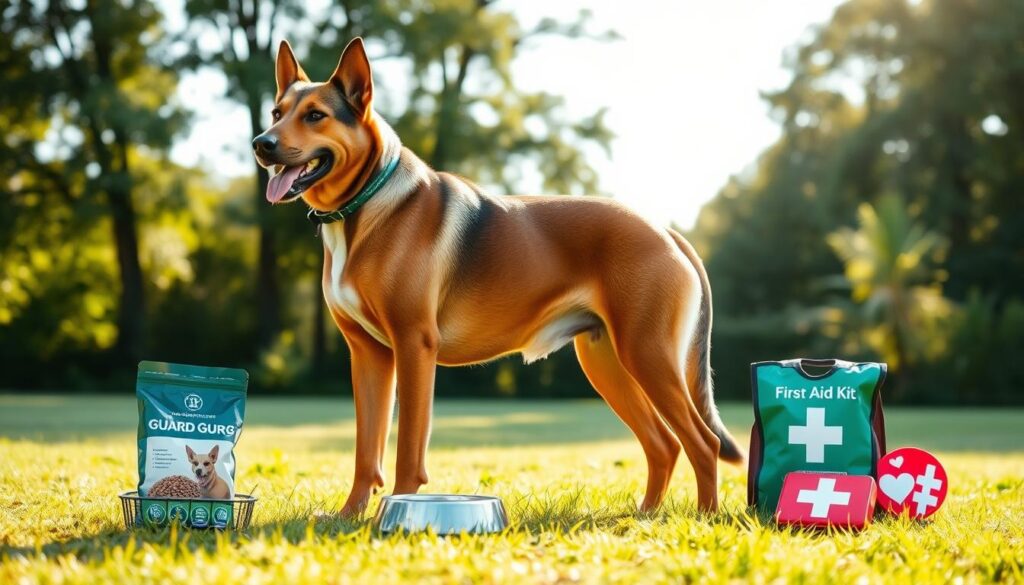
Regular Veterinary Care
Regular vet visits are key to prevent and detect health issues in protective dog breeds. This includes:
| Service | Frequency |
|---|---|
| Vaccinations | Annually |
| Check-ups | Every 6 months |
| Dental care | Every 6 months |
By following these guidelines, you can ensure your guard dog’s health and happiness. Enjoy a long and happy life with your loyal companion.
Legal Considerations When Owning a Guard Dog
Owning a guard dog can protect your home and family. But, it’s important to know the legal side. You need to understand guard dog laws to avoid problems. Knowing the rules for protective dog breeds and loyal dog breeds is key.
Getting the right insurance is crucial. Some policies might have special rules for guard dog breeds. It’s important to check your policy. Also, think about the risks if your dog hurts someone.
Training and socializing your dog is vital. Teach them to listen and stay calm in various situations. This way, your loyal dog breeds or protective dog breeds will behave well and avoid trouble.
Some important things to remember about guard dogs include:
- Understanding local laws and regulations
- Having the right insurance coverage
- Proper training and socialization
- Being aware of potential liability issues
By knowing these legal points and taking action, you can enjoy having a guard dog. Always focus on training and socializing your dog. This way, they will be good and loyal friends.
Cost of Owning and Training a Guard Dog
Thinking about the cost of a guard dog? You need to consider the initial price, training, and ongoing costs like food and vet bills. The guard dog cost changes a lot based on the breed and size. For instance, big breeds like German Shepherds and Rottweilers cost more to buy and train than smaller ones.
Some key costs for a guard dog include:
- Purchase price: This can range from $500 to $5,000 or more, depending on the breed and bloodlines.
- Training costs: Professional training can cost $500 to $2,000 or more, depending on the type and duration of training.
- Food and veterinary care: These ongoing expenses can add up to $1,000 to $2,000 per year, depending on the size and health of the dog.
It’s important to budget for the long-term costs of a guard dog. This includes the cost of protective dog breeds and their training. Knowing the total guard dog cost helps you decide if it’s right for you and your family.
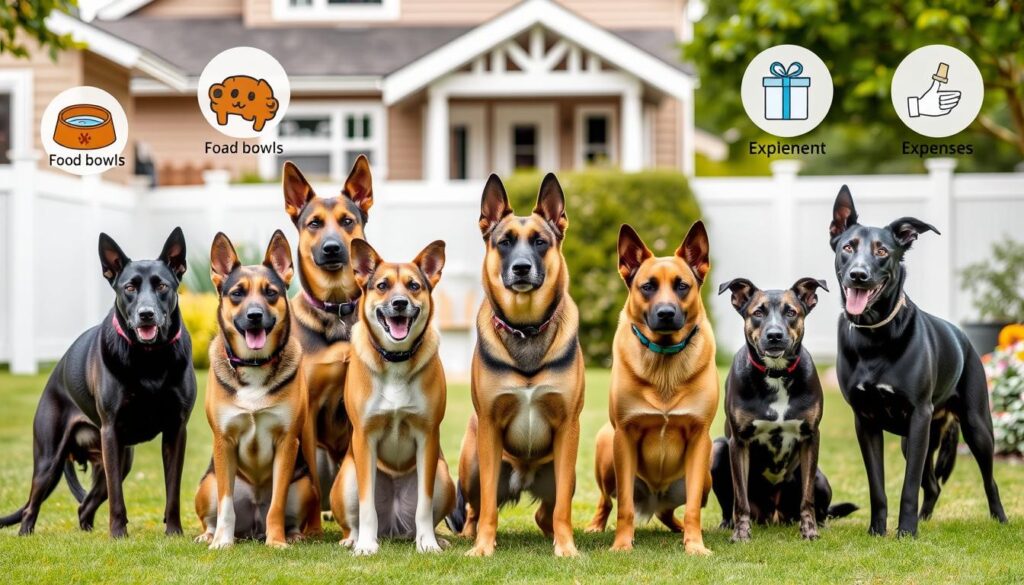
The cost of owning and training a guard dog is a big investment. But it can offer valuable protection and peace of mind. By choosing a loyal dog breed and investing in proper training, you can make your home safer for your family.
Common Mistakes to Avoid When Choosing a Guard Dog
Choosing a guard dog can be tricky. Many people make mistakes that can put their homes and families at risk. It’s important to know the traits of loyal and protective dog breeds. This knowledge helps you pick the right dog to keep you safe.
Some common errors include believing certain breeds are always aggressive or protective. But, any breed can become loyal and protective with the right training. Researching the specific needs and characteristics of different breeds is key to making a good choice.
Breed Misconceptions and Training Errors
- Assuming certain breeds are naturally aggressive or protective
- Not providing proper training and socialization
- Overlooking the importance of exercise and mental stimulation
To avoid these mistakes, understand the needs of loyal and protective dog breeds. Focus on proper training, socialization, and care. This way, your new dog will be a trusted guardian of your home and family.
Creating a Safe Environment for Your Guard Dog
Creating a safe and comfy home for your guard dog is key. Make sure it’s well-ventilated, has a good shelter, and enough room to move. Loyal dog breeds like German Shepherds and Rottweilers need regular training and socializing. This helps them stay calm and focused.
To keep your guard dog safe, avoid accidents and dangers. Remove harmful items, keep toxic stuff locked away, and block off escape paths. Protective dog breeds like Doberman Pinschers and Belgian Malinois are naturally alert. But they still need proper training and care to stay safe and effective.
Here are some important tips for a safe dog environment:
- Regular vet visits and health care
- Good food and water
- A comfy and secure home
- Reducing accident risks
By following these tips and focusing on guard dog safety, you can make a safe and happy home for your loyal friend. Always learn about your protective dog breeds‘ needs to keep them happy and healthy.
Conclusion: Choosing the Right Guard Dog for Your Home
Choosing the best guard dog for your home is a big decision. It needs careful thought. The German Shepherd, Rottweiler, Doberman Pinscher, and Belgian Malinois are top picks. They are loyal, alert, and protective.
Before picking a guard dog, think about your lifestyle and home. Make sure the breed fits your needs perfectly. Researching different breeds is key to making a good choice.
A well-trained guard dog brings unmatched security and peace of mind. Having the right dog by your side makes your home safe. You’ll also enjoy their company, knowing they protect you.
FAQ
What is the difference between a guard dog and a watch dog?
A guard dog is trained to protect and defend their home and owners. A watch dog alerts their owners to strangers or threats.
What are the key characteristics of an effective guard dog?
Effective guard dogs are loyal, protective, alert, and trainable. They detect threats and keep their home and family safe.
What are the benefits of having a guard dog?
Guard dogs offer security and peace of mind. They deter burglars and intruders. They also provide companionship and emotional support.
What are some of the best guard dog breeds?
Top guard dog breeds include German Shepherds, Rottweilers, Doberman Pinschers, and Belgian Malinois. They are strong, intelligent, and trainable.
What are the essential traits to look for in a guard dog?
Look for loyalty, protectiveness, alertness, and trainability in a guard dog. Proper training and socialization are key.
What size and strength considerations should be made when choosing a guard dog?
The size and strength of a guard dog depend on the homeowner’s needs. Large breeds like German Shepherds and Rottweilers deter physically. Medium breeds like Belgian Malinois are better for smaller spaces.
What are the training requirements for guard dogs?
Guard dogs need obedience, socialization, and protection training. Positive reinforcement and consistency are crucial for their behavior.
What are the health care and maintenance needs of guard dogs?
Guard dogs need regular exercise, a balanced diet, and veterinary care. Proper grooming and environmental enrichment are also important.
What legal considerations should be taken when owning a guard dog?
Owning a guard dog involves legal responsibilities. Ensure proper insurance and comply with local laws and regulations.
What are the costs associated with owning and training a guard dog?
The costs of owning and training a guard dog vary. They include the initial price, training fees, food, veterinary care, and ongoing expenses. Budgeting is essential.
What are some common mistakes to avoid when choosing a guard dog?
Avoid breed-based assumptions and failing to train the dog properly. Choose a dog that fits your lifestyle and living situation.
How can I create a safe environment for my guard dog?
Provide a secure and comfortable living space for your guard dog. Ensure proper training and socialization. Regular exercise, mental stimulation, and veterinary care are crucial.

